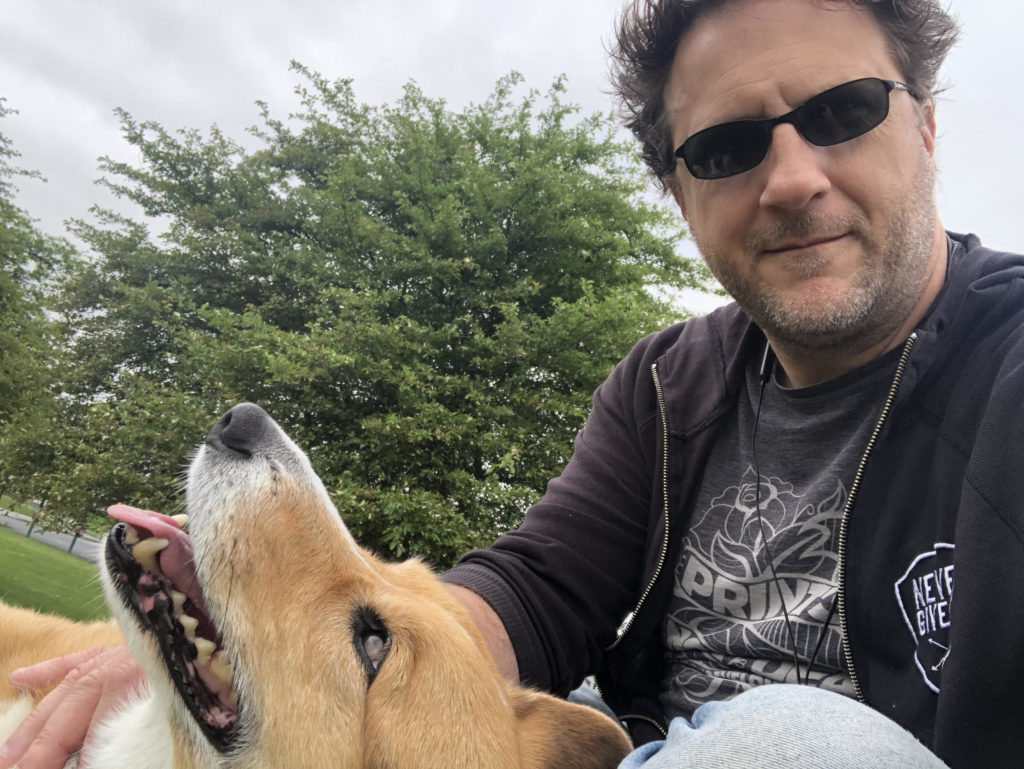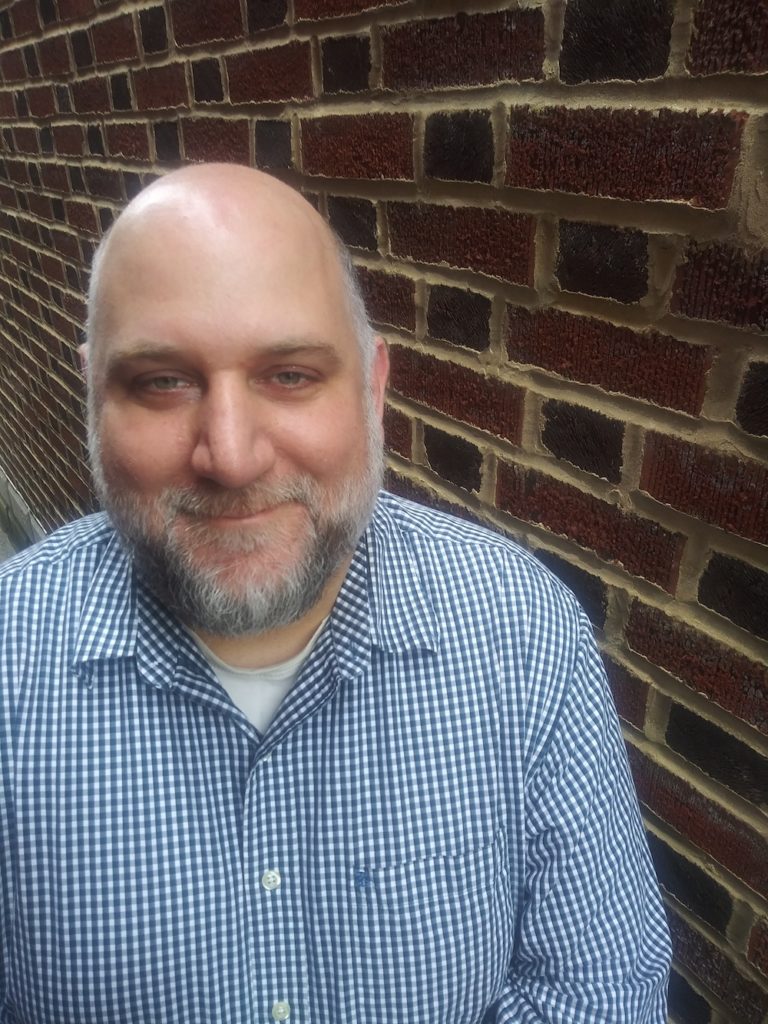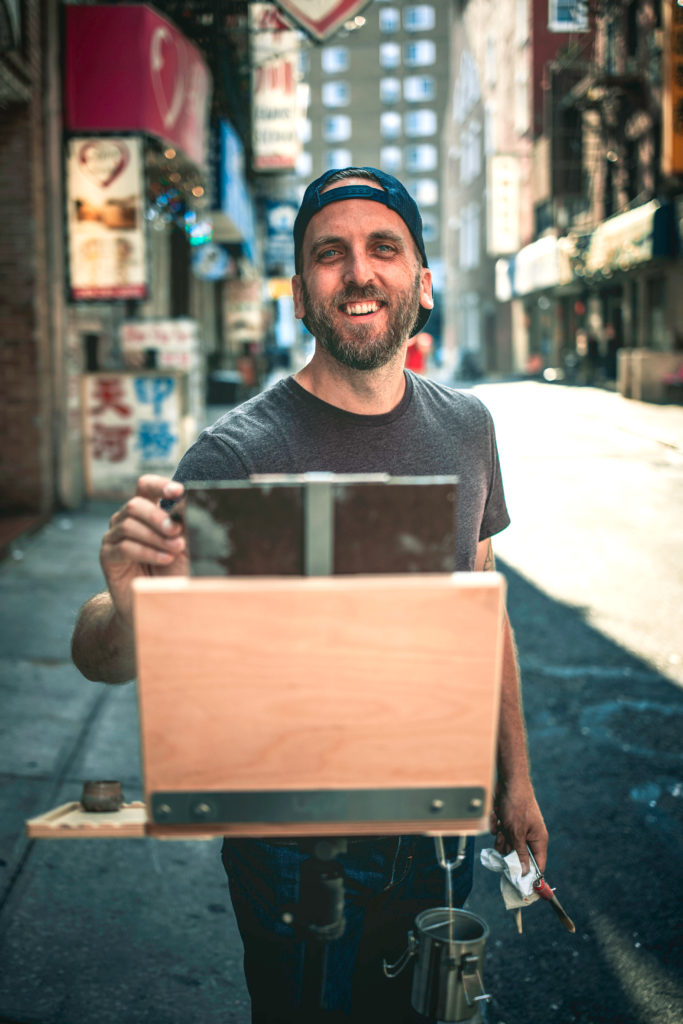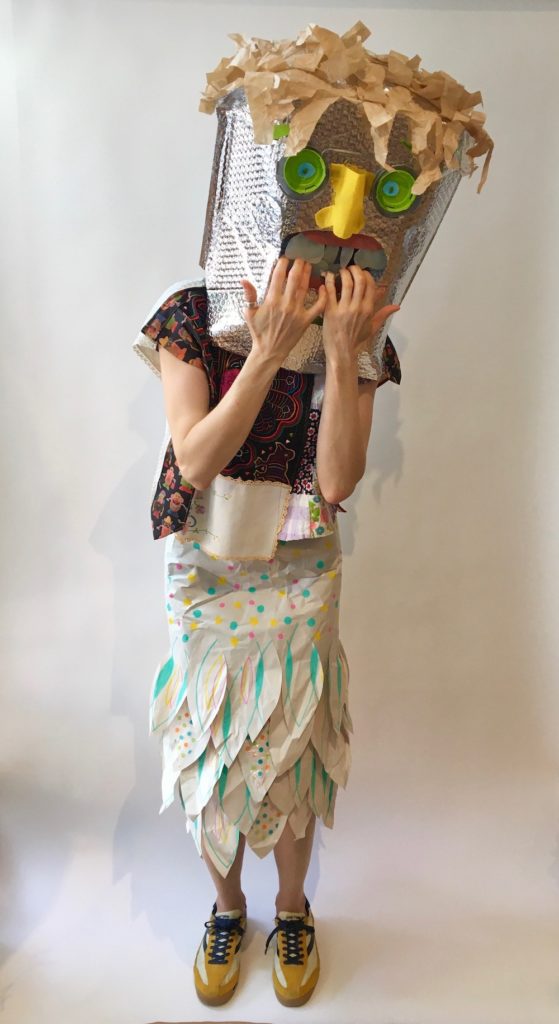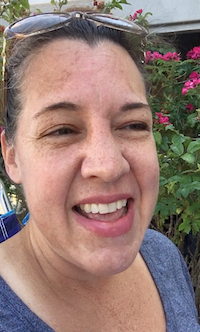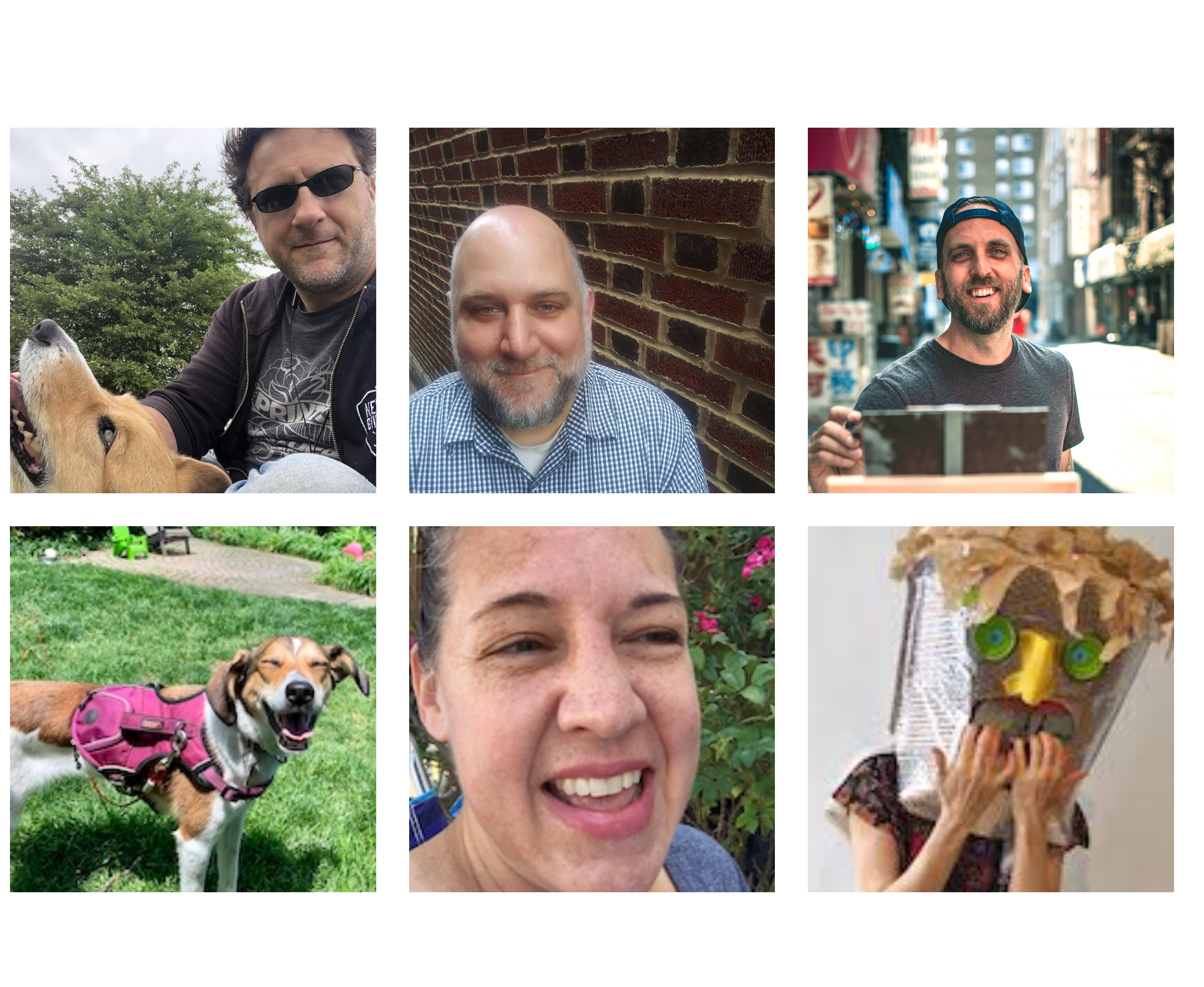
How to burst that creative block: Ideas from PCA&D’s faculty and staff on feeding creativity in a time of upheaval
Wednesday, August 5th, 2020
Great art college faculty and staff know just how to help students refine their skills, examine ideas critically, assess creative choices, and find their unique voices.
But, as professionals in their creative fields, they know about all those “other times,” too:
What happens when you enter one of those dreaded periods when “go with the creative flow” isn’t possible because everything seems to have dried up?
As creatives, we know there will be times when our confidence is shaken, or the flood of ideas disappears, or we get frustrated at the gap between what we imagine and what we are creating. Those times when you feel that idea just beyond reach, or you just need to recharge and refill with inspiration, but you’re not sure where to turn.
Here’s some encouragement to work through that stage, to be persistent, and to be kind to yourself when it happens. These essays were first shared this summer in the weekly email newsletters sent to PCA&D students. They are collected here for reference the next time your inspiration levels need a little boost:
CHRIS RUCH, MOTION GRAPHICS INSTRUCTOR
Between occasional creative droughts and riding my emotional cycles (happiness/contentment—depress
I start most days around 7 am with a hot shower (seems to get the blood flowing and muscles relaxed), followed by catching up with some favorite websites and social channels (my content choices feed my interests and generally don’t stimulate too much anxiety — I primarily follow art/illustration/animation/hum
Weather permitting, I walk my dog for an hour or longer. I always bring headphones in case I need music to help me pick up my pace, but it’s also nice to hear the birds, kids playing, and generally soak in the world around me. This has been a good time to pray and think without distractions. I’ve also used this time to listen to audiobooks.
I then try to get some work and communicating done: 10 am (through) 2 pm is my most focused/productive time. In the middle of that, I take a short break to eat lunch. In the mid-afternoon, like many people, I start getting sluggish, so I usually exercise or get out of the house (to shop or do chores/errands).
Late afternoon/early evening (bookended around dinner) I usually have another couple focused energy bursts, so I churn out some work, or learn something, or play with my band, hang out with friends, and also plan what I’ll be doing the next day. After which I might either play a video game, read a book, watch a show or movie, and then head to bed (usually 10-11 ish).
This routine has allowed me to mostly avoid creative droughts or major depressive funks. I am slowly trying to improve my diet as well, which has made a great impact on my mood and energy.
JUSTIN PHILLIPS, ADJUNCT INSTRUCTOR, FOUNDATION
Phillips also recently published another piece on creativity in the time of coronavirus, “Time is Now,” which you can read here.
I would love to share with you some practices that help me sustain my creative work and also how I reenter my creative mindset when the pressures of life pull my attention away from my studio practice.
I am a firm believer in establishing daily routines, processes, and practices that have purpose and intention. Routines build discipline which helps create the momentum that is paramount in idea development, skill-building, and creating a body of work. Artists need to create the energy that surrounds their practice and the focus to create deep and engaging work. You get this through being actively engaged in your practice and process as often and as regularly as possible.
I am a morning person so my routine includes coffee, a healthy walk, meditation, some reading, and emails. My morning ritual really sets the tone for the day. There is a school of thought that if you win the morning then you win the day. I also wear many hats in my studio practice so there is always work to be done. Whether it is making art, preparing materials, doing administrative work, writing, or teaching, there is always work to be attended to, so I pivot depending on my mood or deadlines.
When life pulls me away from my studio work I acknowledge that this is happening or has happened and I do not let it get me down. A career in the arts is a marathon and not a sprint. As artists we aspire to have longevity and, with this in mind, I am gentle with myself as I reengage in my work. If I feel stuck and need a way to reenter my creative practice I engage in fun work. I essentially have playtime in my sketchbook. I do automatic drawings or automatic writings, I make collage or watercolor, I do work that is for me and its purpose is solely to reignite my creative momentum and to build an entrance for me to jump back into a creative mindset. This playtime is also really helpful when I start to feel as if the current body of work is starting to feel stagnant or I feel the need to switch gears. I have a lot of experiments in my studio that are fun projects that I have been working on for years. I am not sure if these works will evolve into anything other than just creative playgrounds for my mind to let loose in but it is important for me to have places to let my mind wander.
JESSICA SPONSLER, ASSISTANT PROFESSOR, LIBERAL ARTS
I’ve been in school, as a student or professor, since I started kindergarten. That’s a long time! The academic cycle is familiar to me; however, it doesn’t mean that it’s easier to manage the stress, anxiety, and exhaustion. But I have learned a few tricks to recharge myself and avoid burnout. The most important is to embrace breaks between semesters!
Teaching, like learning, can be emotionally exhausting. I spend long hours preparing for class, grading student work, and participating in professional development in my field every day. I feel overwhelmed and stressed out, just like you do. All this makes a break essential. It’s not free time or vacation – it’s a period to regenerate.
At the start of each break, I embrace sloth. I usually buy myself a new book as a treat for when I finish grading. This year was The Mirror and the Light by Hilary Mantel. I spend a few days relaxing, reading, and catching up on television shows. This summer I watched The Great on Hulu and caught up with What We Do in the Shadows. Normally my kids are still in school when I start my breaks. I actually have time alone during the day to do whatever I want for a few hours (it’s been 92 days with my family all home, all the time, in case anyone is counting).
After my week or two of laziness, I spend time on projects. This summer I expanded my vegetable garden, redecorated my daughters’ rooms, and I’m going to start painting the walls of the rooms downstairs. All these projects require physical activity and have a tangible result (a room looks different or a closet is organized). That is very rewarding.
I usually spend a few weeks traveling each summer – to see relatives and friends in New England or weekends in NYC or day trips to Washington, D.C., or a week at the beach. I usually have a list of exhibits to see, museums to visit, and people to hug. This summer will be different. Travel is not safe and I have more preparation work for the fall than typical. Instead of seeing it as a loss (it’s hard but I’m trying!), I am going to focus on seeing this time as productive. Slowing down, focusing on one thing at a time, doing something physical outside at least once a day, eating seasonal fruits and vegetables, and getting enough sleep are all healing activities. It’s also how my dog Coco lives her life and she is the happiest creature I know. So, take the summer to recharge and follow Coco’s lead!
AARON THOMPSON, ASSISTANT PROFESSOR, FOUNDATION
Being an observational painter is a fairly solitary endeavor, so it is perfectly suited for these pandemic times. I am constantly looking for and finding ways to be inspired because I am constantly looking for subjects that can be turned into paintings.
I think a lot about painting. Often, you will see me squinting or making a weird face. Those who know me well know this means I am contemplating the possibility of a location for a painting. For me, inspiration can be as simple as noticing a shift in the weather or how the light falls on an object or place. I spend a lot of time hunting for these moments, which means I basically spend a lot of time walking around looking at the world around me. If I am feeling stuck, I walk and watch. I go for a hike and explore someplace new. Or, I go to an old place at a time that I have never been there. Nature is forever inspiring. When I find a subject, the work begins.
From that point on, the time of day and location often dictate my routine for me. Ideally, I have four or five paintings going for each season, varied by time of day and weather. This way, I can always have something to pick up and work on at any given moment. I may do smaller, faster studies when working out ideas, but the larger paintings have a different kind of investment for me and truly sustain me artistically.
Of course, there are still times when I still feel stuck, times when all I can do is look at Art, contemplate, read, listen to podcasts, or research. A friend of mine once compared these times to an incubation period. As I grow artistically, I have come to realize, though it can sometimes feel like I am losing momentum, that these gestation periods are actually highly productive. The only trick is to not give up on the work that I hope to make.
My/our community is also an incredible resource when my creativity is empty. We are so fortunate to be artists and connected to like-minded people. I find the most inspiration by reaching out to my students, teachers, or peers, and hearing what they are doing. Even if they themselves are in a place of struggle, we can support and empower one another, introduce new threads of thought, or even just say, I’ve been there and this is how I managed to get through.
What I hope you take away from this is, to not beat yourself up if you are finding it challenging to make Art right now. Use the world around you, make Art about your life, pay attention to the moments that excite you. Stay connected with our community; it is a life-long resource. And skills are great, but dedication is the greatest skill you can practice. That is the skill that will take your Art places that even you didn’t know it could go.
NATALIE LASCEK, DIRECTOR OF THE CENTER FOR CREATIVE EXPLORATION
JESSICA EDONICK, DEAN OF STUDENTS
Jessica Edonick, Dean of Students, recorded a special message for PCA&D students.
In it, she talks about how this spring’s “unceremonious” departure from campus in the face of quarantine has affected so many of us, how events such as protests for greater racial justice both inspire and challenge campus culture; how she’s focusing her creative energies on envisioning plans to bring us back together this fall; and how both play and seeking stillness (not to mention running and ice cream!) feed her spirit.
Plus, she shares the identity of her muse…
You can find Dean Edonick’s video here: Don’t miss it!
(Top photo, clockwise, from top left: Chris Ruch and Gryphon, Justin Phillips, Aaron Thompson, Natalie Lascek, Dean Jessica Edonick, and Dr. Jessica Sponsler’s dog, Coco.

